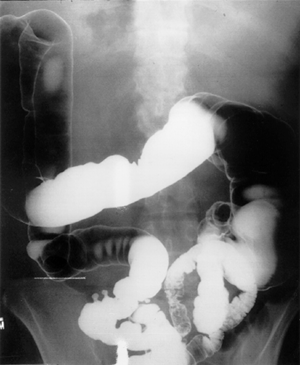Course Authors
John E. Morley, M.D.
During the last three years, Dr. Morley has received grant/research support from Vivus, Merck & Co., Upjohn, B. Braun McGaw, Bayer Corp and Nestec, Ltd. He has also served on the Speakers' Bureau for LXN, Organon, Ross, Pharmacia & Upjohn, Glaxo Wellcome, Hoechst Marion Roussel, Searle, Merck & Co., Roche, Bristol-Myers Squibb, Novartis, Pratt, B. Braun McGaw, Pfizer and Parke-Davis.
Estimated course time: 1 hour(s).

Albert Einstein College of Medicine – Montefiore Medical Center designates this enduring material activity for a maximum of 1.0 AMA PRA Category 1 Credit(s)™. Physicians should claim only the credit commensurate with the extent of their participation in the activity.
In support of improving patient care, this activity has been planned and implemented by Albert Einstein College of Medicine-Montefiore Medical Center and InterMDnet. Albert Einstein College of Medicine – Montefiore Medical Center is jointly accredited by the Accreditation Council for Continuing Medical Education (ACCME), the Accreditation Council for Pharmacy Education (ACPE), and the American Nurses Credentialing Center (ANCC), to provide continuing education for the healthcare team.
Upon completion of this Cyberounds®, you should be able to:
Mr. S. is an 82-year-old male residing in a Nursing Home. He has been doing very well and takes part in a variety of activities in the home. Over the last week he has fallen eight times and has sustained minor injuries. On Sunday evening, he is noted to be drowsy and fails to go to the Bingo game. His physician is phoned and agrees to his transfer to the local hospital's emergency department.
In the ED he appears alert and orientated when seen by the physician. Routine laboratory tests showed a normal white count with a left shift, the BUN/creatinine ratio was 10 to 1. A chest x- ray showed no abnormalities.
What is the most likely cause of this nursing home resident's delirium?
The presence of any one of a left shift, elevated white cell count, leukopenia and hypo-or hyperthermia is highly suggestive of infection in an older person. Leukocytosis can also been seen following a myocardial infarction.
A urinalysis of Mr. S.'s urine showed neither white cells nor bacteria. As Mr. S. had vague lower abdominal pain, a CT scan of his abdomen was obtained that demonstrated "diverticula with no evidence of diverticulosis." Colonoscopy showed diverticula.
Figure 1.

It needs to be recognized that the CT scan only has a 50% sensitivity and specificity for diverticulitis. The patient was treated with 10 days of broad spectrum antibiotics intravenously. He was kept in a well-lighted room with a sitter for the first 36 hours. His albumin was 2.9g/dl and he received peripheral parenteral nutrition. His mental status recovered completely and on discharge he had a mini-mental status examination score of 29/30 (normal > 23/30).
While most infectious causes of delirium are due to urinary tract infections or pneumonia, other sites of infections that are more difficult to diagnose, such as Mr. S.'s diverticulitis, include sinusitus, tooth infections, bacterial endocarditis, osteomyelitis, appendicitis, cerebral abscess and pressure ulcers.
Delirium is a major problem in older persons. It results in increased mortality and prolonged hospitalization. The causes of delirium are characterized by the mnemonic:
DELIRIUMS:
Drugs (digoxin, theophylline, cimetidine, anticholinergics)
Emotional (agitated depression, mania)
Low po2 (myocardial infarction, CVA, anemia, pulmonary embolus)
Infections
Retention of urine or feces
Ictal and postical states
Undernutrition, dehydration, electrolyte disorders
Metabolic (thyroid disorders, Addison's disease, vitamin B12 deficiency)
Subdural hematomas
Persons with undernutrition develop delirium when on drugs that are either albumin bound (increased free drug) or fat soluble (decreased distribution volume and drug released from the fat).
Delirium is often missed by physicians with devastating outcomes. A hallmark of delirium is its fluctuating course so, as in the case of Mr. S., the history of altered mental status is as important as the findings at the time of the examination. The caregiver's history has to be believed. Many older persons have atypical presentations of disease and, in the case of delirium, new onset of falls is an atypical presentation of this syndrome.
The hallmarks of delirium are:
- acute (or subacute) onset
- confusion (disorientation)
- lack of attention
- fluctuating course
- presence for less than four weeks
Sharon Inouye at Yale has developed a scale for diagnosing delirium called the Confusion Assessment methodology (CAM).
This has been slightly altered by my colleague, Douglas Miller at St. Louis University.
Modified Cam Adapted by D.K. Miller, MD, from Inouye SK et al. Ann Intern Med 1990; 113:941-8 with permission History: (Interview pt. first, then proxy)
Exam
Stupor. Require shaking/shouting to arouse; Coma. mCAM CODING RULES "DEFINITE" Delirium (score of 4) = Acute Onset + Fluctuation + Inattention + [Disorganized/Incoherent Thinking or LOC] "PROBABLE" Delirium (score of 3) = [Acute Onset or Fluctuation] + Inattention + [Disorganized/Incoherent Thinking or LOC] "POSSIBLE" Delirium (score of 2) = Any Two Acute Onset or Fluctuation or Inattention or [Disorganized/Incoherent Thinking or LOC] No Delirium Observed (score of 1) = Any One Acute Onset or Fluctuation or Inattention or [Disorganized/Incoherent Thinking or LOC] (Score of 0) = None of the above findings |
Further Reading
1. Inouye SK, Charpentier PA. Precipitating factors for delirium in hospitalized elderly persons. Predictive model and interrelationship with baseline vulnerability. JAMA 275:852-7, 1996.
2. Lewis LM, Miller DK, Morley JE, Nork MJ, Lasater LL. Unrecognized delirium in ED geriatric patients. Amer J Emerg Med 13:142-145, 1995.